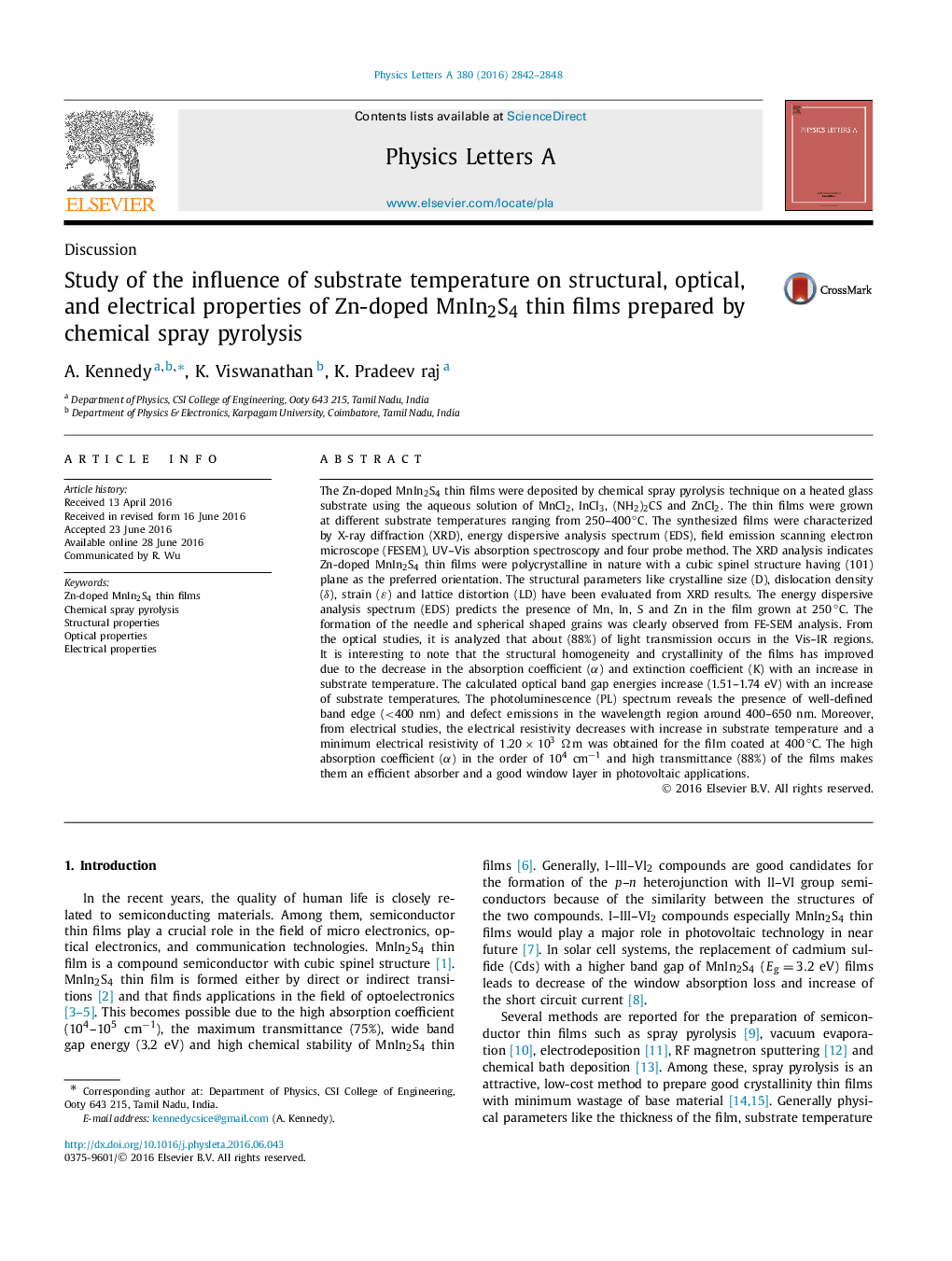| کد مقاله | کد نشریه | سال انتشار | مقاله انگلیسی | نسخه تمام متن |
|---|---|---|---|---|
| 1858878 | 1037172 | 2016 | 7 صفحه PDF | دانلود رایگان |

• Zn-doped MnIn2S4 thin films were deposited on glass substrate via chemical spray pyrolysis technique.
• XRD pattern indicates that the prepared films are polycrystalline in nature with a cubic spinel structure.
• From FESEM, an enhancement in the surface morphology with substrate temperature (250–400 °C) is observed.
• Optical studies show that high absorption and low transmission occur in UV-region.
• Electrical studies affirm the decrease of resistivity with increase of substrate temperature and reveal the semiconducting nature of the films.
The Zn-doped MnIn2S4 thin films were deposited by chemical spray pyrolysis technique on a heated glass substrate using the aqueous solution of MnCl2, InCl3, (NH2)2CS and ZnCl2. The thin films were grown at different substrate temperatures ranging from 250–400 °C. The synthesized films were characterized by X-ray diffraction (XRD), energy dispersive analysis spectrum (EDS), field emission scanning electron microscope (FESEM), UV–Vis absorption spectroscopy and four probe method. The XRD analysis indicates Zn-doped MnIn2S4 thin films were polycrystalline in nature with a cubic spinel structure having (101) plane as the preferred orientation. The structural parameters like crystalline size (D), dislocation density (δ), strain (ε) and lattice distortion (LD) have been evaluated from XRD results. The energy dispersive analysis spectrum (EDS) predicts the presence of Mn, In, S and Zn in the film grown at 250 °C. The formation of the needle and spherical shaped grains was clearly observed from FE-SEM analysis. From the optical studies, it is analyzed that about (88%) of light transmission occurs in the Vis–IR regions. It is interesting to note that the structural homogeneity and crystallinity of the films has improved due to the decrease in the absorption coefficient (α ) and extinction coefficient (K) with an increase in substrate temperature. The calculated optical band gap energies increase (1.51–1.74 eV) with an increase of substrate temperatures. The photoluminescence (PL) spectrum reveals the presence of well-defined band edge (<400 nm) and defect emissions in the wavelength region around 400–650 nm. Moreover, from electrical studies, the electrical resistivity decreases with increase in substrate temperature and a minimum electrical resistivity of 1.20×103Ωm was obtained for the film coated at 400 °C. The high absorption coefficient (α ) in the order of 104cm−1 and high transmittance (88%) of the films makes them an efficient absorber and a good window layer in photovoltaic applications.
Journal: Physics Letters A - Volume 380, Issue 36, 19 August 2016, Pages 2842–2848